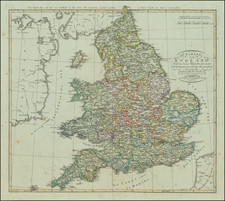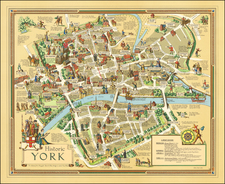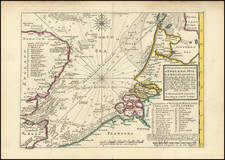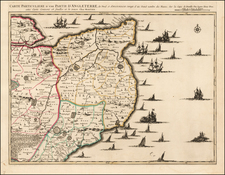This classical landscape engraving, executed by the renowned William Woollett and based on an original painting by George Smith, received the "Second Premium" at the 1760 inaugural Exhibition of the Society of Artists of Great Britain. It captures a serene pastoral scene with detailed depictions of a water body, livestock, and distant architectural elements, reflecting the 18th-century British countryside's idyllic charm.
The engraver, William Woollett was considered the pre-eminent engraver of his generation. To achieve the highest caliber of art reproductions, print publishers in the Britain engaged competed to secure the talents of the best engravers available. Prominent among these was William Woollett. Starting in the early 1760s, engravers and print dealers became increasingly influential in the trendy and lucrative world of contemporary art—a realm where the artist did not always lead. Thomas Jones, an artist, expressed that no one could elevate a fledgling landscape painter's profile better than Woollett. Jones harbored hopes of gaining widespread recognition through Woollett's renown as an engraver, much as his teacher, Richard Wilson, had gained fame through Woollett's exquisite prints of his paintings.
George Smith and his brother John were painters hailing from Chichester who specialized in rural landscapes, often depicted in a “classical” style. Their artwork gained public attention and acclaim through the release of exceptional engravings, which showcased the beauty and detail of their paintings to a broader audience.
First Exhibition of the Society of Artists of Great Britain
Eight years prior to the inception of the Royal Academy, the Society of Artists of Great Britain launched its inaugural exhibition of contemporary art in 1760. This event captured the British public's attention, making art a coveted asset among the cultured elite. Crowds thronged to these exhibits, and while not everyone could afford paintings, the burgeoning market for prints allowed a broader audience to indulge in this emergent luxury.
The Society's founders sought to advance the visual arts, sciences, and crafts through a subscription-based fund, advocating the essential role of drawing in various professions and its potential benefit to society. From 1755 to 1763, the Society amassed over £22,200, one-third of which was dedicated to fostering the arts. The Society awarded premiums for innovative designs and breakthroughs, such as in papermaking, with the highest accolades of 100 guineas for exceptional history paintings and 40 for landscapes.
This era marked significant strides in reproducing landscape, historical, and sporting artworks, reflecting the evolution of an American landscape painting tradition pioneered by artists like George Lambert and Samuel Scott. During the 1750s and 60s, artists recognized the value of engravings in building their renown, a sentiment shared by the era's budding publishers, who anticipated the economic rewards of backing the Society of Arts. John Boydell emerged as a leading figure in this movement, capitalizing on the lucrative business of art prints.









![[Hungarian Map of Great Britain] Nagy Britannia](https://storage.googleapis.com/raremaps/img/small/85219.jpg)

![[ Northwest Cornwall ] De Custen van Engelandt tussche C. Corwal et het eijlandt Londey](https://storage.googleapis.com/raremaps/img/small/96664.jpg)


